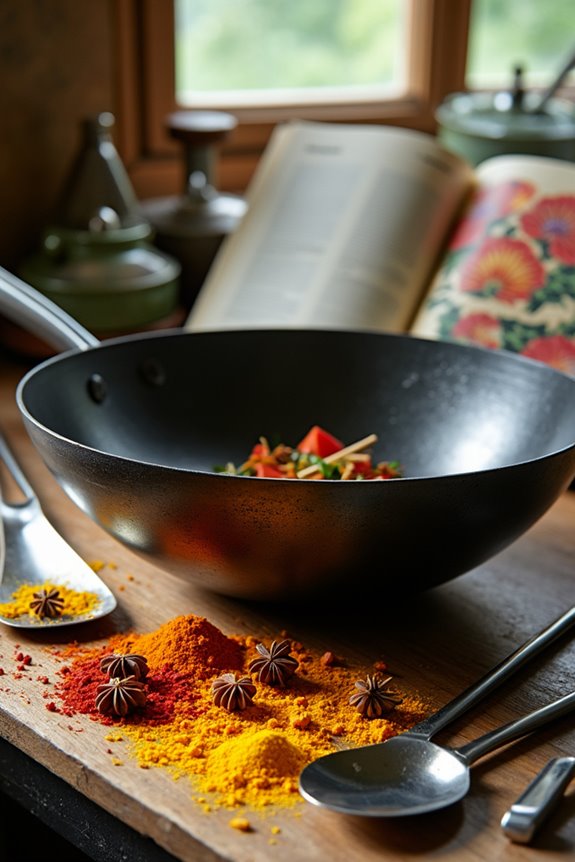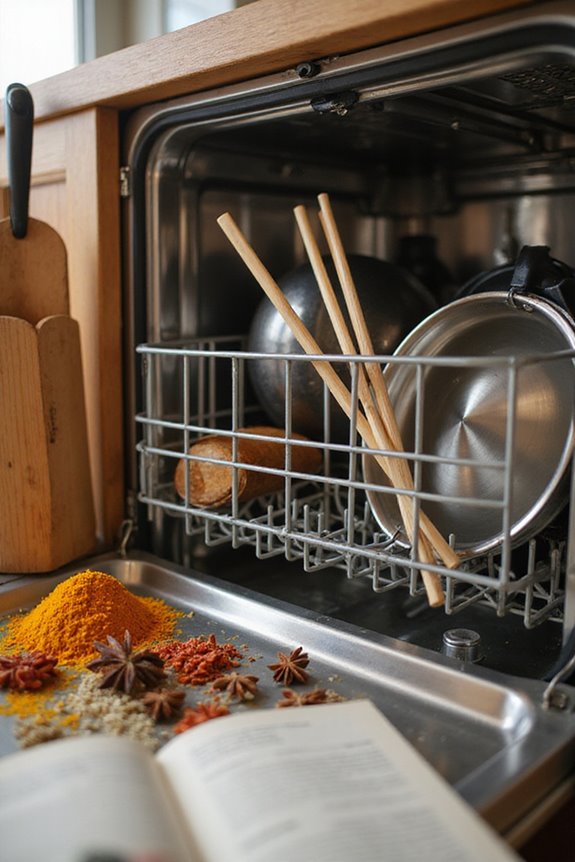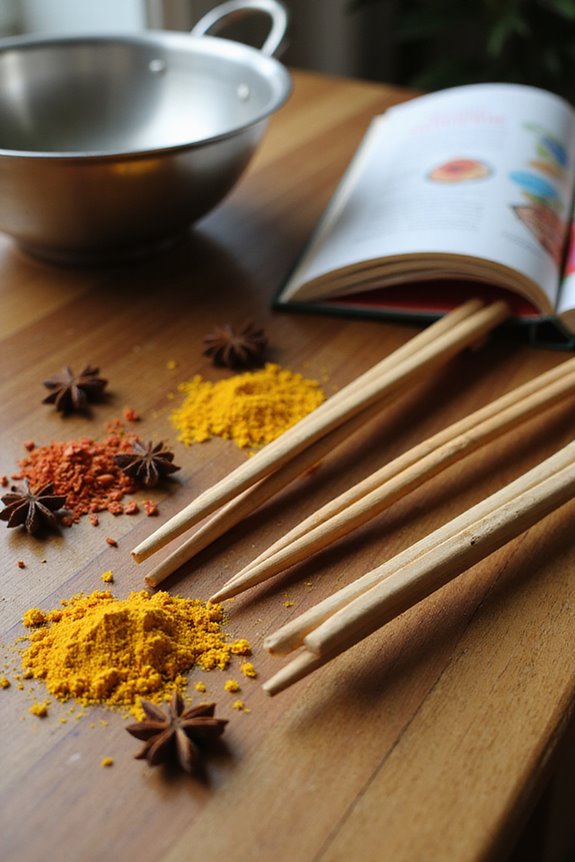Teaching kids to use chopsticks is a delightful adventure! Start with the proper grip—hold the upper chopstick like a pencil and rest the lower one against their ring finger. We can use fun, spring-assisted training tools with animal designs; they make learning exciting! Progress with pompom transfers and cotton ball challenges to build confidence. Remember, celebrating small victories is key! Now, let’s explore some more fun activities and cultural insights!
Key Takeaways
- Demonstrate the proper chopstick grip by holding one chopstick like a pencil and resting the other against the ring finger for stability.
- Use engaging tools like brightly designed, spring-assisted chopsticks to make learning enjoyable for kids.
- Practice with fun activities, such as transferring pompons or mini toys, to build grip and control gradually.
- Encourage progress by focusing on one skill at a time, offering praise for all attempts, and fostering a supportive environment.
- Share the cultural significance of chopsticks to enhance appreciation and motivate children to learn this traditional skill.
Understanding the Proper Chopstick Grip
When we teach kids how to use chopsticks, the first thing we want to tackle is the proper grip. It’s magical what a good grip can do! Here’s why grip significance matters:
- Finger Dynamics: The upper chopstick is held like a pencil, about one-third from the top.
- Stable Base: The lower chopstick rests against the ring finger, held steady by the thumb.
- Movement Control: Our thumb, index, and middle fingers control the upper chopstick, making delightful opening and closing motions. Additionally, utilizing ergonomic designs in chopstick learning kits can greatly enhance comfort and ease for beginners.
Step-by-Step Demonstration Techniques
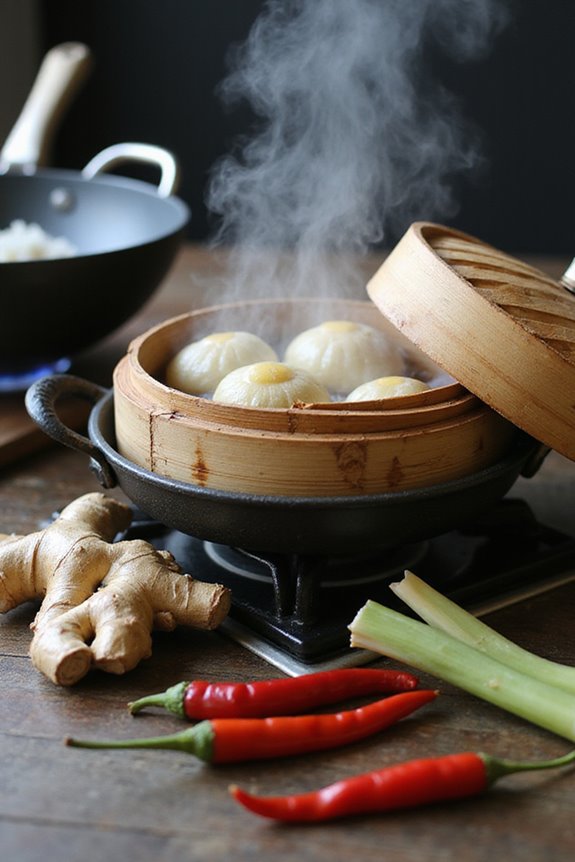
Teaching kids how to use chopsticks can be a delightful experience! Let’s kick off with some fun demonstration techniques. First, sit beside the child for close visual modeling. Use exaggerated, slow-motion movements to showcase finger placements while holding chopsticks. Here’s a simple way to explain:
- “Hold the top chopstick with three fingers.”
- “Let the ring finger support the bottom chopstick.”
Then, engage them with counting cues—“One, move it up; two, move it down!” Remember, it’s all about practice! Celebrate their small victories to keep spirits high. By nurturing this skill together, we create those magical moments and craft confidence. Plus, using training chopsticks can significantly enhance their grip and coordination. So let’s grab those chopsticks and make mealtime an enjoyable adventure!
Using Training Tools and Modifications

Using the right training tools can truly transform the experience of learning how to use chopsticks! We can choose from various training chopstick types. For instance, bright, spring-assisted options with animal designs can make learning delightful! Ergonomic designs, like the Edison Learner Chopsticks, provide three-finger supports that make it easier for little hands.
When selecting chopsticks, consider the following fun features:
- Colorful & Cute Designs: Think penguins or bunnies—who wouldn’t want to use them?
- Adjustable Components: As kids get better, these tools can adapt with them!
- Dishwasher Safe: Easy cleanup makes mealtime magical!
In addition to these features, using anti-slip tips can enhance grip and control for more effective learning. With these tools, we can help our kids master chopsticks while sharing moments of joy and cultural appreciation!
Progressive Practice Activities
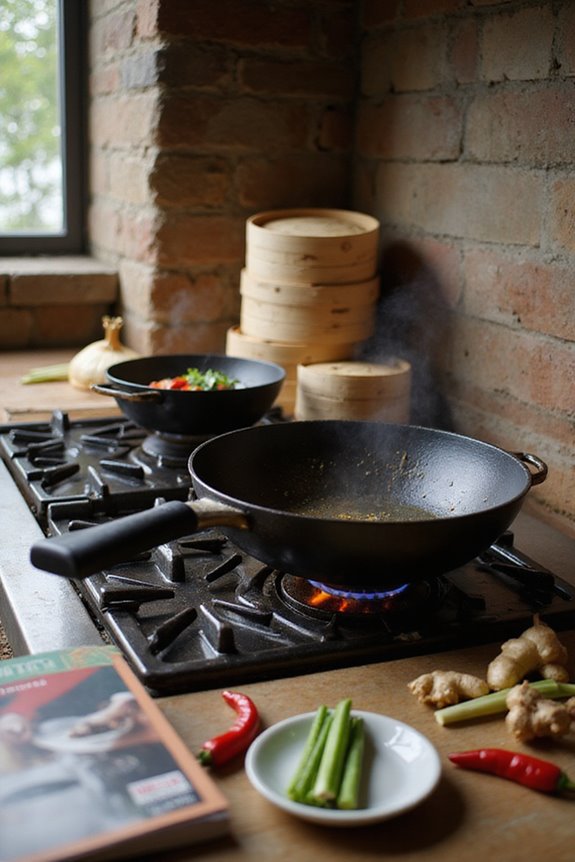
Let’s plunge into some delightful progressive practice activities that really ramp up the fun of learning chopsticks! We can start with simple tasks, focusing on gripping and moving objects. Here are some progressive techniques to build skill mastery:
- Pompom Transfer: Let’s scoop up those colorful pompoms and carry them from one bowl to another.
- Cotton Ball Challenge: Cotton balls are slippery, making it a fun twist!
- Mini Toy Pick-Up: Try using tiny toys to ignite excitement!
As we build confidence, gradually tackle smaller objects or slippery ones. Regular practice will enhance grip quality, making it easier to handle different items effectively. Remember, regular practice sets us up for success. It’s all about having fun while becoming chopstick experts, one delightful activity at a time!
Encouragement and Patience
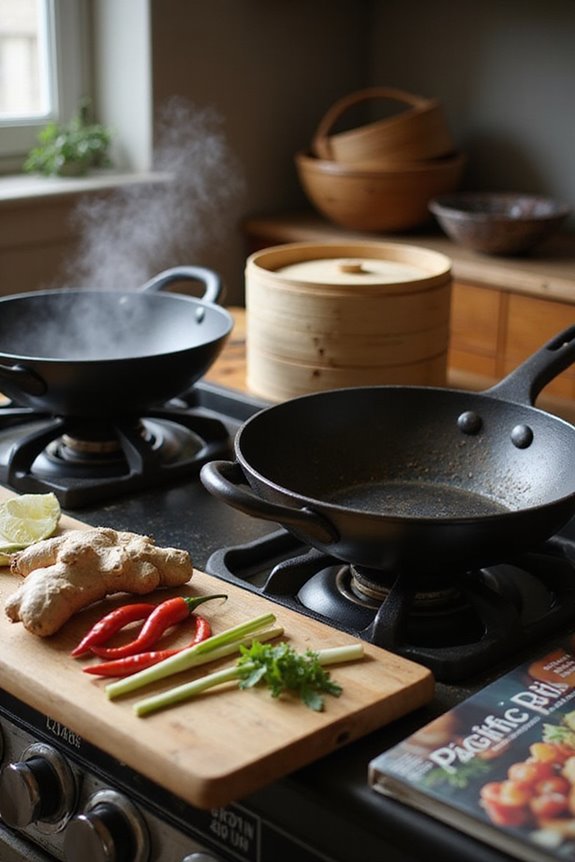
While it might seem challenging at first, encouragement and patience transform the journey of learning chopsticks into a delightful adventure! With a sprinkle of positive reinforcement, we can celebrate each small success, making practice feel like a game. Remember, it’s okay to make mistakes—those are just stepping stones in our magical journey!
Let’s break it down:
- Focus on one skill at a time; this keeps it light and fun.
- Praise every attempt, even if it’s less than perfect.
- Use playful language and create a supportive environment.
With mindful patience, we nurture resilience. Each child learns at their own pace, so let’s enjoy this experience together, turning frustration into laughter and mastering the art of chopsticks one delicious bite at a time! Additionally, using colorful eco-friendly materials can make the learning experience more engaging and enjoyable for kids.
Cultural Appreciation and Context
Recognizing the rich history behind chopsticks can make learning to use them an even more delightful adventure!
Chopsticks have been around for over 5,000 years and hold immense cultural significance. They symbolize gentleness and social unity in many cultures, especially in China. Imagine sharing a meal, using chopsticks to promote harmony and connection—what a magical experience!
Here are some thoughts to ponder:
- Cultural Context: Each region offers unique designs—Chinese chopsticks are long and blunt, while Japanese ones are lacquered and tapered.
- Etiquette: Remember, sticking chopsticks upright in rice isn’t just a culinary faux pas; it’s linked to funerals in East Asia! Additionally, using chopsticks aligns with eco-friendly options by reducing reliance on disposable utensils.
Fun and Engaging Games for Practice
Now that we’ve explored the cultural richness of chopsticks, let’s make learning to use them an exciting adventure! Get ready for some fun with Chopstick races. We can divide into teams, racing to transfer marshmallows or jellybeans from one bowl to another without using our hands. How delightful!
Next, challenge ourselves with Object challenges. Let’s practice picking up different items like cottonballs or even those cute Iwako sushi erasers. Remember, we can always adjust the difficulty based on our skill levels.
Lastly, let’s celebrate our progress with a cheering section. The encouragement creates a magical atmosphere that makes practice feel less like work and more like play. So grab those chopsticks, and let’s plunge into our chopstick adventures!
Resources for Further Learning
To help us become chopstick pros, let’s explore a treasure trove of resources that make learning even more delightful!
- Online Tutorials: Ever tried following a cooking show? These visual guides offer step-by-step instructions that simplify using chopsticks.
- Educational Articles: Immerse yourself in articles discussing the brain benefits of chopstick use. They’re packed with fun facts that’ll impress your friends at dinner parties.
Don’t forget colorful training chopsticks and those nifty activity trays for hands-on practice. For a sprinkle of inspiration, check out our favorite parenting forums where others share their stories and tips.
With these fantastic resources, we’ll turn our chopstick skills into a magical mealtime experience! Let’s get started and enjoy the process together!
Frequently Asked Questions
What Age Is Appropriate for Kids to Start Learning Chopsticks?
Isn’t it ironic how we’re concerned about the perfect age to start? Well, age recommendations suggest kids can begin at 2+, but it really depends on their developmental readiness and unique progress. Let’s embrace this journey together!
How Can I Keep Kids Motivated During Practice Sessions?
To keep kids motivated during practice sessions, we can incorporate fun rewards and engaging practice games. Let’s celebrate their achievements together, making it a joyful experience that builds excitement and camaraderie among everyone involved!
What Are Common Mistakes Beginners Make With Chopsticks?
When beginners use chopsticks, we often see improper grip causing food dropping. It’s essential we encourage relaxed holding and practice proper alignment to enhance control, making our dining experience more enjoyable and less frustrating together.
Are There Any Safety Concerns When Kids Use Chopsticks?
When our kids wield chopsticks like samurai swords, we’ve gotta prioritize chopstick safety. Injury prevention is key; supervising while teaching proper use can help avoid dangerous accidents, ensuring a fun dining experience together.
How Long Does It Typically Take to Master Using Chopsticks?
When we think about mastering chopstick techniques, practice duration varies widely. Typically, with consistent practice, we can see significant improvement within weeks, but full proficiency might take months. It’s a fun journey we can share together!


